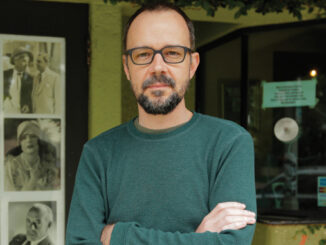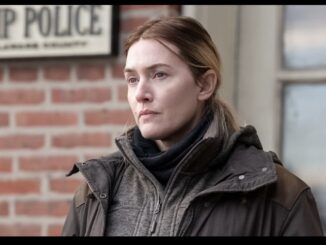
by Betsy McClane
Tuesday (August 13) marks the 120th birthday of Alfred Hitchcock, one of the most emulated, written-about, and influential filmmakers in history.
The Alfred Hitchcock Wiki lists over 200 books on the British director and his films, the majority published within the past 20 years. This number does not include thousands of articles, reviews, interviews, nor The Hitchcock Annual, an intermittently printed journal, not to mention the countless contemporary directors who are inspired directly or indirectly by the man who made “Psycho,” “The Birds,” “Strangers on a Train,” “Rear Window,” “Rope,” and so many more.
With the enormous repositories of information at hand, one might wonder what remains to be said.
But author John Billheimer’s “Hitchcock and the Censors” proves that there is always something new to discover about The Master of Suspense.
This book is informative even for post-production professionals who are familiar with Hitchcock’s mastery of editing, creative use of sound, and memorable music. Most editors have likely studied the shower scene in “Psycho” (1960) ad infinitum. The list of The Motion Picture Editors Guild 75 best edited films includes several directed by Hitchcock. While he may not have handed out compliments freely, Hitchcock needed and admired editors. In fact, he married one. After hiring picture editor Alma Reville in 1923, he ended up marrying her three years later. Her intense collaboration with him throughout their careers is a subject that cries out for exploration, for Lady Alma Hitchcock, like many women in the film industry, remains hidden in the large shadow of her husband.
Although today Hitchcock’s films may seem like museum pieces, the director battled censors on both sides of the Atlantic from the start of his career to the very last — and those battles had a lasting impact on his work, and how we have come to remember it.
Boosted by more than 100 cited sources, “Hitchcock and the Censors” offers a succinct chapter on Hitchcock films. Each contains a synopsis, followed by a few pages describing censorship problems and solutions, sometimes including photos. There are also chapters outlining how television network censorship, with its different set of standards and advertiser control, had an impact on “Alfred Hitchcock Presents” and “The Alfred Hitchcock Hour,” the director’s popular contributions to the burgeoning small-screen medium.
One of the most valuable resources plumbed by Billheimer is the Motion Picture Association of America’s Production Code Administration Records, housed at the ever-invaluable Academy of Motion Picture Arts and Science’s Margaret Herrick Library in Los Angeles. These 27 linear feet of paper are an inestimable asset in tracking Hitchcock’s decades-long battles with British and US censors. For those not familiar with the history of the Hollywood Production Code, widely known as the Hays or Breen Code, this book also provides a good beginners’ account.
Hitchcock was not the only person keeping a keen eye on picture editors. Billheimer notes that censor Joe Breen sent a letter to studio boss Jack Warner congratulating him on the “utterly superb” work Mac MacCord did in editing Marlene Dietrich’s performance of “The Laziest Gal in Town” in “Stage Fright” (1950). Although Billheimer, and presumably the reference source, cite MacDonald as the editor, the film in fact credits E.B. Jarvis, who was a Hollywood fixture from 1930 to 1963. Whoever the editor was, the film’s cutaways to the audience toned down the sexual heat in Dietrich’s showcase number, which Billheimer writes, “Involved some erotic gymnastics as Dietrich vamps her way between three onstage lounges,” wearing a white Dior-designed nightgown, topped by a flowing robe trimmed in feathers.
The censors even took on Cole Porter, who was persuaded to rework the lyrics of his song, changing “Lord knows I couldn’t” to “You know I couldn’t” and eliminating a “Let’s misbehave.” Dietrich still sizzles, and it is clear that but for her “laziness” she is “More than willing to learn – how these gals get money to burn.” Presumably the disrespectful reference to God somehow blinded Joe Breen to any intimation of trading sex for money.
To explain how Hitchcock’s films were often damaged — and believe it or not, occasionally enhanced — by code restrictions, Billheimer begins with the pre-code era (1929-mid 1934). Worried about possible government regulation that could crimp their profits, the Hollywood studio heads hired Will Hays to head an industry-funded organization to clean up the movies’ wild and wicked image. Hays’ and his adjutants, including Breen, affixed a seal of approval that was required before a studio would release any film.
Hitchcock’s problems were not limited to America. Working in England prior to 1939, Hitchcock faced battles with the British Board of Censors, a nominally independent agency that began with only two rules, “No materialization of Christ,” and “No nudity.” This over time expanded to 98 rules, with several meant to preserve the status quo of British life, including banning “anything which suggested conflict between employers and the employed,” and content “calculated to wound the susceptibilities of foreign people.”
Although the first was particularly British and led to the banning of Eisenstein’s landmark silent film “Battleship Potemkin” (1925), the second also held sway in Hollywood until the US entered WWII. Before the official declaration of war in 1942, the studios were determined to preserve worldwide box office, especially the lucrative German market, which some thought would expand if the Nazis won the war. Several Hitchcock pictures were constrained by this political censorship, notably “Foreign Correspondent” (1940) and “Saboteur” (1942).
As early as 1927 with the silent “The Lodger,” Hitchcock faced a bugaboo that popped up throughout his career: Protagonists, especially if they were played by stars, could not be guilty of any serious crime. In that film, popular romantic star Ivor Novello’s Lodger is found not to be a serial killer, when he was the murderer in the source novel. Conversely, characters who committed crimes were not allowed to go unpunished.
These story demands held sway throughout most of Hitchcock’s career, and were virtually impossible to circumvent, since beginning with “Secret Agent” (1936) the Hays office reviewed his scripts (including the 1930s English thrillers) before shooting began. This led to incongruous, sometimes ludicrous endings in films like “Rebecca” (1940) in which Laurence Olivier’s Maxim is found innocent of murdering his first wife, and when in “Strangers on a Train” (1951) it is revealed that Guy (Farley Granger) did not carry out the murder as arranged. For “Vertigo” (1958), considered by many to be the director’s masterpiece, Hitchcock was obliged to shoot a tacked-on ending in which a radio broadcast announces that the murderous villain was captured. Hitchcock was able to have this scene removed from prints screened in the US, but it remained intact in most other countries.
“Strangers on a Train” allows Billheimer to parse Hitchcock’s veiled references to homosexuality, a topic absolutely forbidden under the Hays Code. Homosexuality was so taboo that it was not even specified in the Code’s language. It was simply understood by everyone to fall under the category of banned “sex perversions,” which also included miscegenation, white slavery, and any sex outside of marriage that was presented as attractive or acceptable. Most American audiences of the 1940s and 50s were likely oblivious to sly references to Bruno’s (Robert Walker) obsession with Guy in this film. Billheimer provides a quote from Manny Farber, who did notice, and commented in his contemporary review in The Nation that “Strangers on a Train” “is built around the travestied homosexuality of the murderer,” and the movie was, “Great fun.”
Hitchcock liked fun, and often he had it at the censors’ expense. In Leonard Leff’s “Hitchcock and Selznick,” the director explained how he escaped the eye of the head of the British Board of Censors, Joseph Brooke Wilkinson, or “Brooksie” as he was known. Although the top watchdog over movie sins, Brooksie’s eyesight was failing. During review screenings, Hitchcock recalled, whenever an “offending piece of film approached, I said ‘Mr. Wilkinson-.’ He turned his head toward me and the scene went by on the screen without him seeing it.”
This trick did not work in Hollywood, but as Billheimer demonstrates, Hitchcock deviously got the things he wanted on the screen by shooting material that would obviously affront the censors. He would then make a show of giving in to their demands on some issues, in order to retain elements he cherished, thus creating his own real-life MacGuffins.
This tiresome horse-trading strategy was a drain of time, energy, and money, however, and the author estimates that in aggregate Hitchcock spent the better part of three years engaged in such sparring. For Hitchcock, the bits he was willing to lose were those that illuminated character and plot. Continuity was frequently a secondary concern for the director. Visuals, the interplay of shots, and a picture’s effect on the audience interested him far more than neatly resolved storylines. “Vertigo” is based on the implausible idea that the hero, Jimmy Stewart would overcome the fear of heights that once prevented him from climbing a bell tower to save his lover, to later race up its steps in the finale. Even Francois Truffaut, who arguably started the cult of Hitchcock as auteur, found off-putting the “extraordinary coincidence” of “I Confess” (1953), in which the murderer “Should happen to confess his crime to the very priest who is being blackmailed by the dead man.”
Billheimer’s final chapter offers an excellent chart that details the cost, the box office, and the number of Production Code notes in each Hitchcock film, along with data showing which were cited for violations for sex, violence, and social issues. An engineering Ph.D. from Stanford, he has been best-known until now for two mystery novel series. His experience writing popular fiction translates here into a work that combines solid scholarship with entertaining prose. Putting these two components together is no mean feat, one that more writers about film might well emulate.
“Hitchcock and the Censors” concludes with the fascinating rumination, “We will never know what other movies he might have made if he hadn’t adjusted his own sights to fit within the censors’ limits. A great director’s work might have been even greater.”
“Hitchcock and the Censors,” by John Billheimer. University Press of Kentucky. Hardcover, 384 pages. $50






